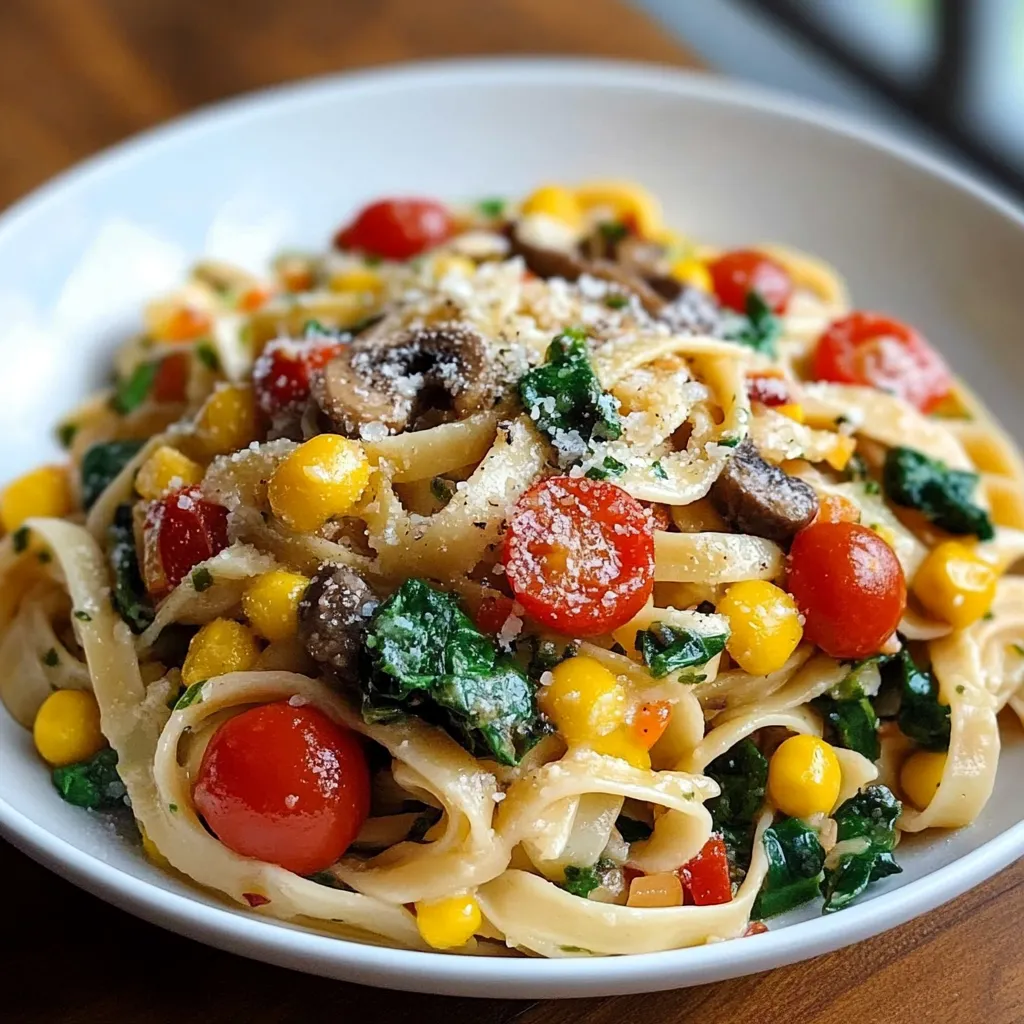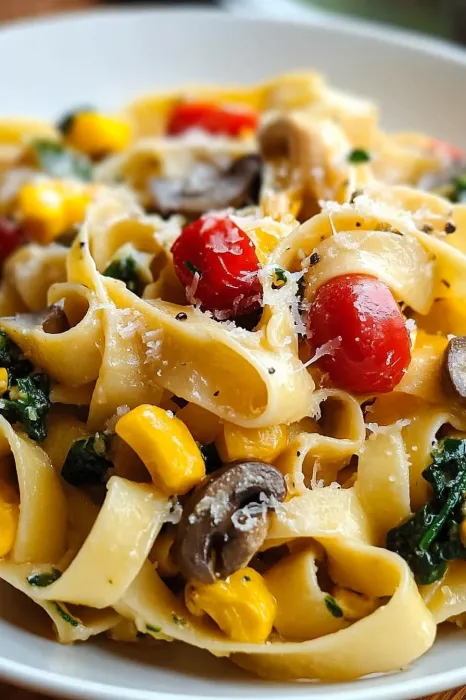 Pin it
Pin it
This hearty pasta primavera combines al dente penne with vibrant seasonal vegetables for a light yet satisfying meal. The bright lemon and herb flavors make this a perfect spring or summer dinner that lets fresh produce shine.
I created this recipe years ago when my garden was overflowing with summer squash and basil. What started as a way to use up excess produce has become our go to meal when we want something that feels both fresh and comforting.
Ingredients
- Penne pasta: Provides the perfect shape to catch small pieces of vegetables and sauce
- Extra virgin olive oil: Forms the flavorful base of this dish rather than heavy cream
- Garlic cloves: Add essential aromatic flavor the fresher the better
- Yellow squash and zucchini: Offer tender sweetness and beautiful color contrast
- Asparagus: Brings a tender crunch and spring flavor select stalks with tight firm tips
- Cherry tomatoes: Burst with sweet acidity look for vine ripened for best flavor
- Red onion: Adds a purple hue and mild sharpness that mellows when cooked
- Frozen peas: Contribute bright color and sweet pops of flavor no need to thaw completely
- Pecorino cheese: Provides salty richness sheep's milk adds distinctive tang
- Fresh lemon juice: Brightens everything always use fresh not bottled
- Fresh herbs: Basil and tarragon add aromatic complexity and freshness
- Red pepper flakes: Allow you to customize the heat level to your preference
Step-by-Step Instructions
- Cook The Pasta:
- Bring a large pot of generously salted water to a rolling boil. Add your penne pasta and cook until al dente usually 9 to 11 minutes depending on the brand. The pasta should retain a slight firm bite in the center. Drain promptly and toss with a light drizzle of olive oil to prevent sticking while you finish the vegetables.
- Sauté The Vegetables:
- Heat olive oil in a large deep skillet over medium heat until it shimmers but doesn't smoke. Add the thinly sliced garlic first allowing it to become fragrant for about 30 seconds before adding the squash zucchini asparagus tomatoes and onion. Season with salt and pepper immediately to help vegetables release their moisture. Cook for exactly 3 to 4 minutes stirring occasionally you want the vegetables tender but not mushy they should retain some texture and bright color.
- Combine Everything:
- Add your cooked pasta to the skillet with the vegetables followed by the peas which will warm through from the residual heat. Sprinkle in the pecorino cheese and drizzle with fresh lemon juice. Gently toss everything together ensuring the cheese begins to melt slightly and coat the pasta. Add red pepper flakes according to your heat preference. Finally fold in the fresh basil and tarragon which will release their oils and aroma without overcooking.
 Pin it
Pin it
The secret to this dish truly lies in not overcooking the vegetables. I learned from my Italian neighbor that vegetables should maintain their individual integrity in pasta primavera when they melt together you lose the beautiful contrasting textures that make this dish special.
Perfect Vegetable Preparation
The key to pasta primavera lies in how you cut your vegetables. Try to make all pieces similarly sized so they cook evenly. For zucchini and yellow squash thin half moons cook quickly and look beautiful. Asparagus should be snapped at their natural breaking point to ensure no woody parts remain. Cherry tomatoes need only be halved to release their juices while maintaining their shape. This attention to cutting technique ensures everything cooks properly in the short sauté time.
Make It Your Own
This recipe welcomes substitutions based on seasonal availability. In summer try corn kernels bell peppers and green beans. Fall versions can include butternut squash mushrooms and kale. Winter adaptations might feature broccoli cauliflower and sun dried tomatoes. Spring calls for peas asparagus and tender greens. The fundamental technique remains the same just adjust cooking times slightly for harder or softer vegetables.
Serving Suggestions
Serve pasta primavera immediately after tossing with fresh herbs for the brightest flavor. A simple green salad with lemon vinaigrette makes the perfect accompaniment. For protein consider adding grilled chicken sliced on top or sautéed shrimp folded in during the final minute of cooking. Vegetarians might enjoy cannellini beans or chickpeas added for protein. Always finish with extra basil leaves and a drizzle of your best olive oil at the table.
 Pin it
Pin it
Frequently Asked Questions
- → What vegetables can I use for this dish?
You can use zucchini, asparagus, cherry tomatoes, squash, red onion, and peas. Feel free to substitute with other seasonal vegetables.
- → How can I make it dairy-free?
Replace the pecorino cheese with a plant-based cheese or nutritional yeast for a dairy-free option.
- → Can I use other types of pasta?
Yes, you can use any type of pasta like spaghetti, fettuccine, or gluten-free pasta depending on your preference.
- → What herbs work best with this dish?
Fresh basil is a great choice. Tarragon and parsley also complement the flavors beautifully.
- → How do I store leftovers?
Store leftovers in an airtight container in the refrigerator for up to 3 days. Reheat gently on the stove or in the microwave.
